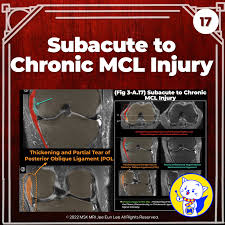A Comprehensive Guide to MCL Injury: Understanding and Treatment

Introduction to MCL Injury
The medial collateral ligament (MCL) is a vital component of the knee joint, providing stability and supporting essential movement. Injuries to this ligament, commonly referred to as MCL injuries, are prevalent in athletes and active individuals, especially during sports involving sudden direction changes or impacts such as football, skiing, and basketball. Understanding MCL injuries is crucial for timely diagnosis and appropriate treatment, which can prevent long-term complications and optimize recovery.
What Causes MCL Injuries?
MCL injuries typically occur due to external forces applied to the knee, such as a direct hit to the outer side of the knee, or due to a sudden change in direction that stresses the ligament. This knee injury is categorized into three grades based on severity:
- Grade I: Mild stretching of the ligament with minor pain and swelling.
- Grade II: Partial tearing of the ligament, resulting in moderate pain and swelling, alongside some instability in the knee.
- Grade III: Complete tear of the ligament, leading to severe pain, significant swelling, and considerable instability.
Signs and Symptoms
Individuals with an MCL injury may experience several symptoms, including:
- Pain and tenderness on the inner side of the knee.
- Swelling and inflammation around the knee joint.
- Stiffness, making it difficult to bend or straighten the knee.
- A sensation of instability in the knee, particularly during movement.
Treatment Options
Treatment for an MCL injury varies according to severity:
- Grade I Injuries: Rest, ice, compression, and elevation (RICE) is often sufficient. Over-the-counter pain relief medication can help manage symptoms.
- Grade II Injuries: In addition to RICE, physical therapy may be required, focusing on strengthening exercises and stabilising the knee. In some cases, a knee brace may be recommended.
- Grade III Injuries: May necessitate more intensive treatment, potentially including surgical intervention to repair the torn ligament, particularly in athletes or individuals with high activity levels.
Conclusion
Understanding MCL injuries is vital for athletes and individuals engaged in physical activities, as timely recognition and appropriate treatment can significantly impact recovery outcomes. With proper care, most individuals can expect a full return to normal function within weeks to months, depending on the injury’s severity. Preventative measures such as strengthening exercises and using proper techniques during sports can also help reduce the risk of such injuries. Those experiencing knee pain or instability are encouraged to seek medical attention to receive an accurate diagnosis and tailored treatment plan.
You may also like

A Comprehensive Guide to High Blood Pressure Medication

Understanding Magnesium Glycinate: Benefits and Uses
